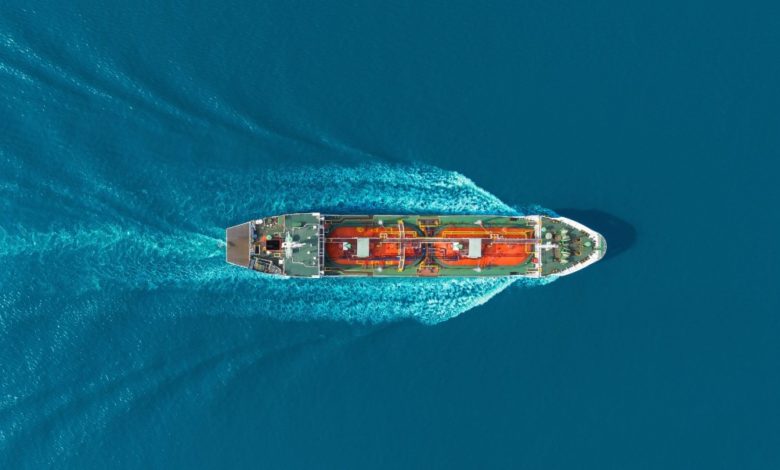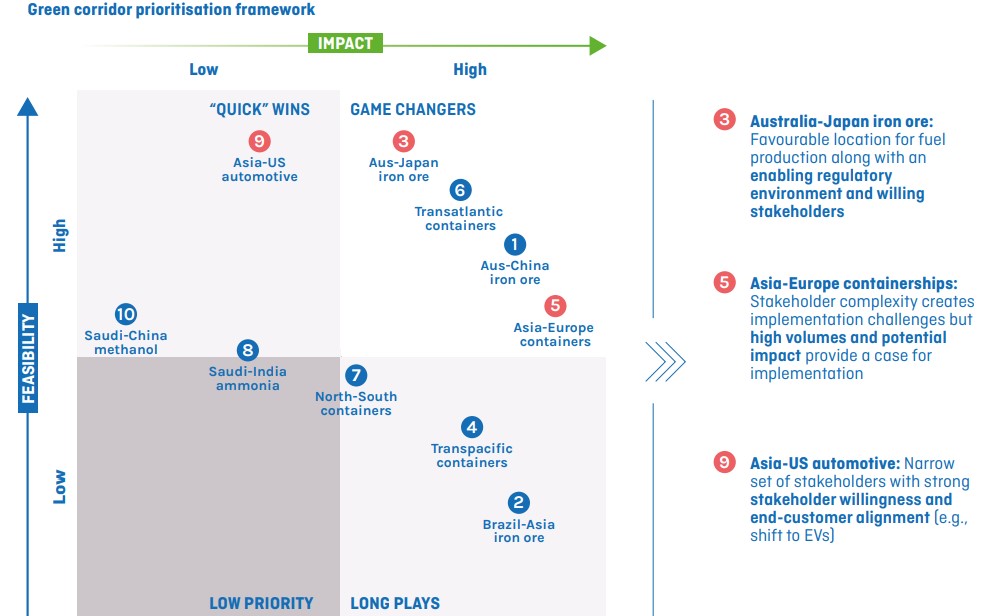Study highlights green corridors as trigger to zero emission shipping

With zero emission fuels and vessels required to achieve significant decarbonisation by 2050, developing so-called green corridors can help speed up the transition to zero emission shipping, something that is now very much in focus following yesterday’s big shipping announcement at COP26, the ongoing United Nations climate summit in Glasgow, where 19 nations have signed on to support these new cleaner shipping routes.
A new study produced for the Getting to Zero Coalition, a partnership between the Global Maritime Forum, Friends of Ocean Action and World Economic Forum, looked at how green corridors – specific trade routes between major port hubs where zero emission solutions are demonstrated and supported – can be conceived, prioritised, and designed to accelerate the speed of shipping’s transition.
It found that, for instance, green corridors can leverage favourable conditions for accelerated action as they allow policy makers to create an enabling ecosystem with targeted regulatory measures, financial incentives, and safety regulations. In addition, it established that they can also put conditions in place to mobilise demand for green shipping on specific routes and help to catalyse accelerated decarbonisation by creating spillover effects that will reduce shipping emissions on other corridors.
Green corridors will enable us to go from ambition to action
The research looked at three corridors: the Australia-Japan iron ore route, the Asia-Europe container route, and the Korea-Japan-US PCC corridor. The case studies were developed in collaboration with more than 30 companies from across the value chain, many of which are active on the routes in question. According to the findings, when applied to both routes, the green corridor concept provides sufficient scale for impact as well as the necessary specificity – across fuel pathway, cargo, policy-making environment, and vessel type – to enable a feasible, accelerated decarbonisation roadmap for the shipping industry.
Techno-economic analysis suggested that green ammonia is a likely fuel choice for the Australia-Japan iron ore corridor, with bunkering in North West Australia for the initial zero emission vessels. The Asia-Europe container route currently generates more greenhouse gas emissions than any other single global trading route. Green methanol and green ammonia are the two zero emission fuels likely to be deployed here.
“Green corridors can help simplify the challenges of zero-emission shipping, bringing solutions to the water faster and at a meaningful scale. The maritime ecosystem is embarking on a journey to a transformed, zero emission shipping sector. The task ahead is complex, but not impossible,” said Johannah Christensen, CEO of the Global Maritime Forum.
“Green corridors will enable us to go from ambition to action. However, there will still be a cost gap between fossil-based shipping and zero-emission shipping of the order of 25% to 65%. Targeted government action to close that cost gap on corridors could pay big dividends for the transition overall,” said Faustine Delasalle, co-executive director, Mission Possible Partnership.

The study concluded that for all green corridors, the success factors are likely to be similar: corridor-level consensus on fuel pathways, policy support to help close the cost gap for higher cost zero emission fuels, and value chain initiatives to pool demand. “Aligning on a corridor-specific decarbonisation roadmap based on these factors could provide all stakeholders with the confidence that is needed to invest, coordinate, and deliver the solutions at scale required by 2030.”
